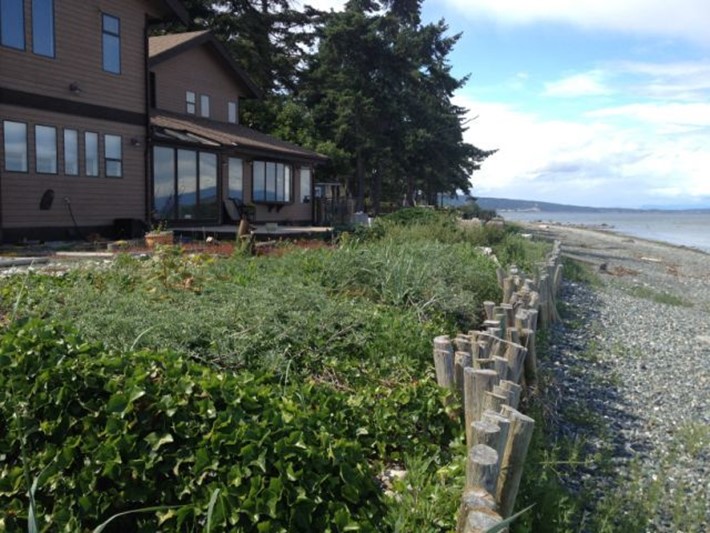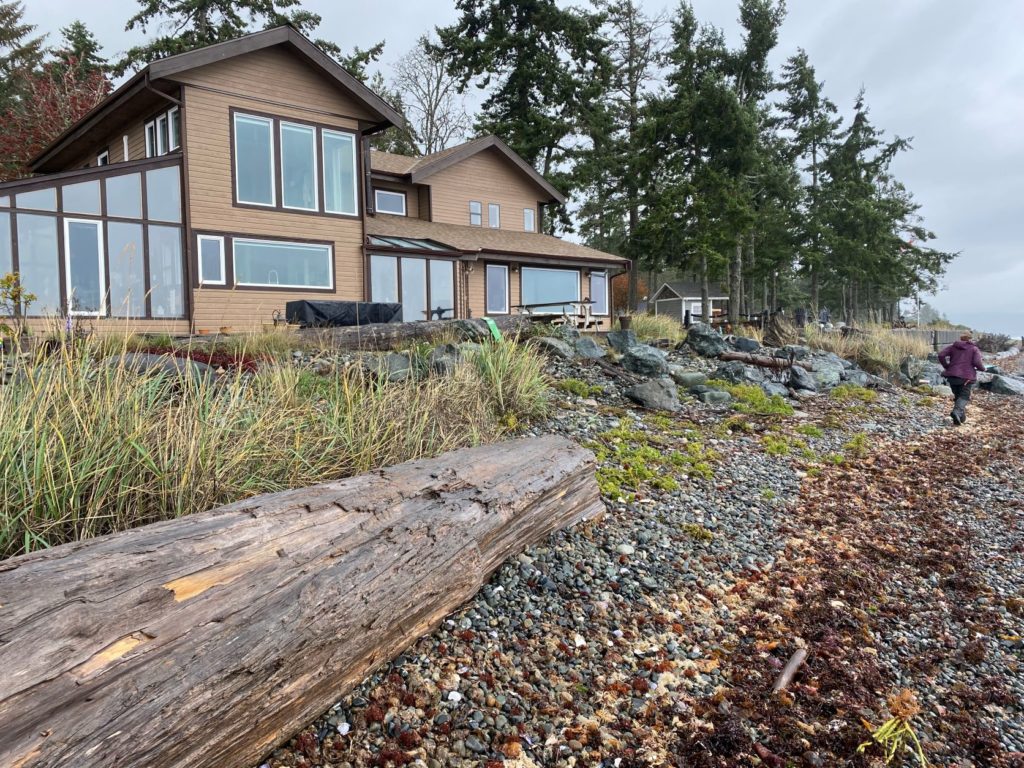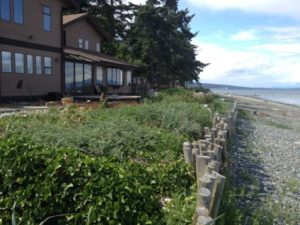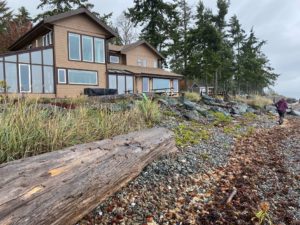Green Shores | Case Studies
Island Highway West, Qualicum Beach, British Columbia


Before

After
Project Overview
| Location: Qualicum Bay, BC | Project area: entire shoreline |
| Year completed: 2016 | Awards: NA |
| Shoreline length: 30 meters | Shore type: Gravel and sand |
| Green Shores rating achieved: Chinook | Total points: 28 |
Site Description
The site is located northwest of Qualicum Bay, along the ‘old’ Island Highway on the East coast of Vancouver Island. It faces the Strait of Georgia (Salish Sea) with Lasqueti Island approximately 18 km to the East.
The shoreline had a failing wooden seawall that the homeowners intended to replace with another seawall, until they became aware of Green Shores as an alternative. The property borders the mouth of Nash Creek which is an important stream for rearing and overwintering habitat for juvenile coho and cutthroat salmon.
Project Team and Affiliated Organizations
Contractor: Ryan Christie, Parksville Heavy Equipment
Biologist: Dave Clough, Clough and Associates
Geotechnical AScT: John Hessels, Lewkowich Engineering Associates Ltd.
Project Objectives
Protection of the home from coastal erosion while naturalizing the shoreline was the main objective. Improved shoreline access, aesthetics, habitat and coastal processes along with invasive plants removal and replacement with native riparian plantings were also important to the homeowners. The project benefited the adjacent Trout Unlimited Canada Nash Creek Restoration project.
Work Plan
The failing seawall was removed, and a buried revetment was designed for the shoreline at the natural boundary. This included a curved, protective transition at the south side of the property where Nash Creek outflows. The new profile was capped with sand and gravel to create a plantable substrate, and native plants such as dune grass, ocean spray and coastal strawberry were established. Large woody debris were partially buried at intervals to reduce wave energy along the shoreline.
Description of how the project meets Green Shores principles
> Maintained/ Enhanced Habitat Function and Diversity
- Shoreline habitat and diversity were enhanced through the removal of the ineffective seawall that impeded movement of organisms from the foreshore up to the upland. Removal of invasive species, and riparian planting of a diverse range of native vegetation also increased shoreline diversity. Mature overhanging vegetation was retained, providing food inputs, shading and improved habitat for shoreline organisms such as insects and small amphibians. Placement of some large boulders and woody material on the shoreline also supports other important wildlife populations such as migrating birds.
> Preserved/Restored Shoreline Physical Processes
- Through restoration of the shoreline, natural processes were preserved while protecting the infrastructure from anticipated sea level rise conditions.
- The re-sloped profile provides protection from erosion, while allowing sediment to move along the shoreline as needed.
- Native vegetation also protects the shoreline through the established root network, and by slowing wave velocity during high water events such as high tide and storms.
> Ecological Services Provided
- The restoration and naturalization of the shoreline maintains hydrological functions such as filtration and control of overland flow, from upland down to the shoreline and out to the aquatic environment.
- The design and implementation of the site provides other services such as maintenance of biodiversity, carbon sequestration, and protection of aesthetics.
> Shoreline Collaboration and Public Education
- The homeowners and project contractor conducted an Open House (October 31, 2016) to showcase their shore friendly design to interested members of the community.
- An article was written up in the Parksville Qualicum Beach News (November 24, 2016) to describe the Green Shores project.
> Additional Notes
This was the first project in British Columbia to receive Green Shores for Homes accreditation.
Photo Gallery
You can click on any photo to view it on full screen.





